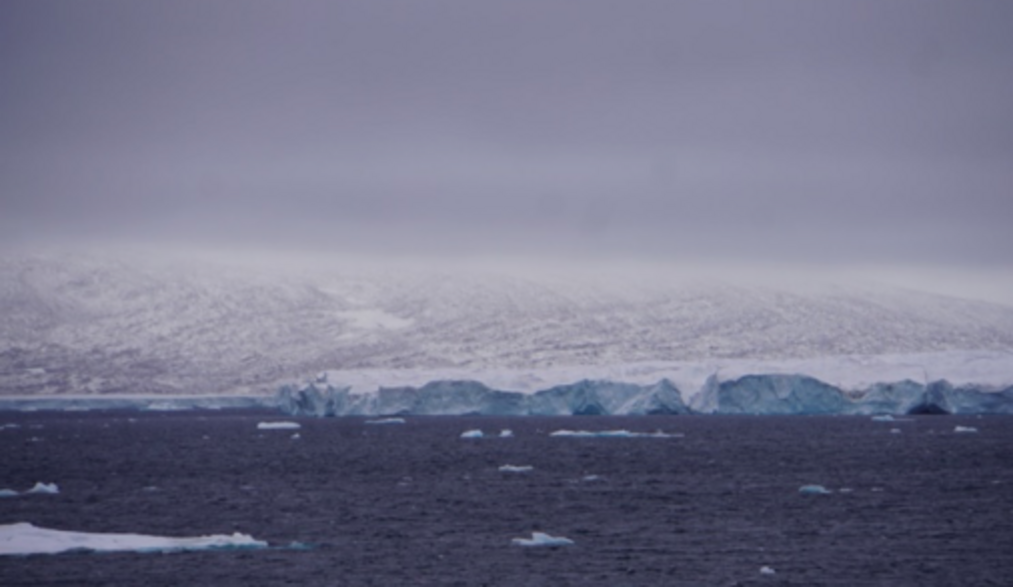Successful Northeast Greenland field campaign by the A2Green project
by R. McPherson, T. Kanzow, AWI.

A team of AWI physical oceanographers, Rebecca McPherson and Torsten Kanzow, and technician Carina Engicht have recently returned from conducting a successful measurement campaign and recovering oceanographic moorings in Northeast Greenland. They joined a Danish Navy ship, HDMS TRITON, on their patrol of the region from 30 August to 20 September 2021.
Near Nioghalvfjerdsbræ (79 North Glacier (79NG)), two moorings were successfully recovered; one at the calving front of 79NG and the other approximately 50 nm offshore, which have been collecting hydrographic data since 2017 and 2018, respectively. Prelimary results show a prolonged cooling of the warm subsurface Atlantic water that drives the basal melting of 79NG. Further analysis is required to determine the extent of this cooling, its drivers, and the implications for the basal melt rate. Hydrographic measurements were also conducted near 79NG and in other more southern fjord systems such a Young Sund and Kong Oscar Fjord.
During the first phase of research in ocean-glacier interactions, 79NG was the primary focus: it is the largest marine-terminating outlet glacier of the Northeast Greenland Ice Stream. The work examined the pathways of oceanic heat from the continental shelf towards the glacier, which contributes to the melting of its large floating ice tounge. The moorings recovered at 79NG by the AWI team will contribute to the understanding of how the subsurface warm water inflow to the glacier changes over time, and the processes that drive the circulation of warm water near the calving front.
The hydrographic measurements taken on board the TRITON in fjords further south of 79NG contributes to the current work which extends the research focus to the whole East Greenland continental shelf. The ocean-glacier interactions examined at 79NG are thought to be applicable to other glacier systems as far south as Scoresby Sund (69° N). Thus, the drivers of ocean-driven melt rate of the marine-terminating glaciers in Northeast Greenland can be better quantified and understood.
The field work is supported by the Joint Arctic Command who facilitated the coordination between the Danish Navy and the participating scientists at AWI. The scientific collaboration between institutes was organised by ISAAFFIK, the support of whom we are greatly appreciative. We are very grateful to the dedicated and capable support of our work by the captain and crew of HDMS TRITON.
